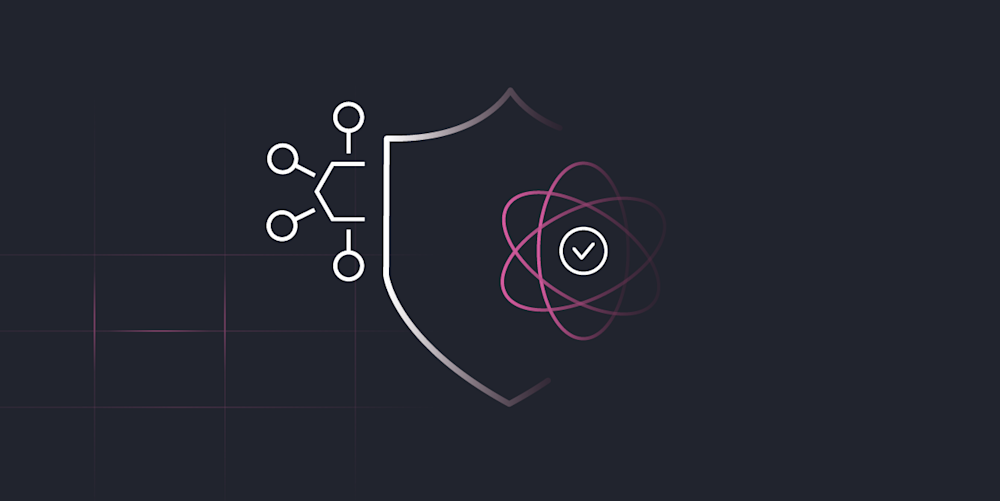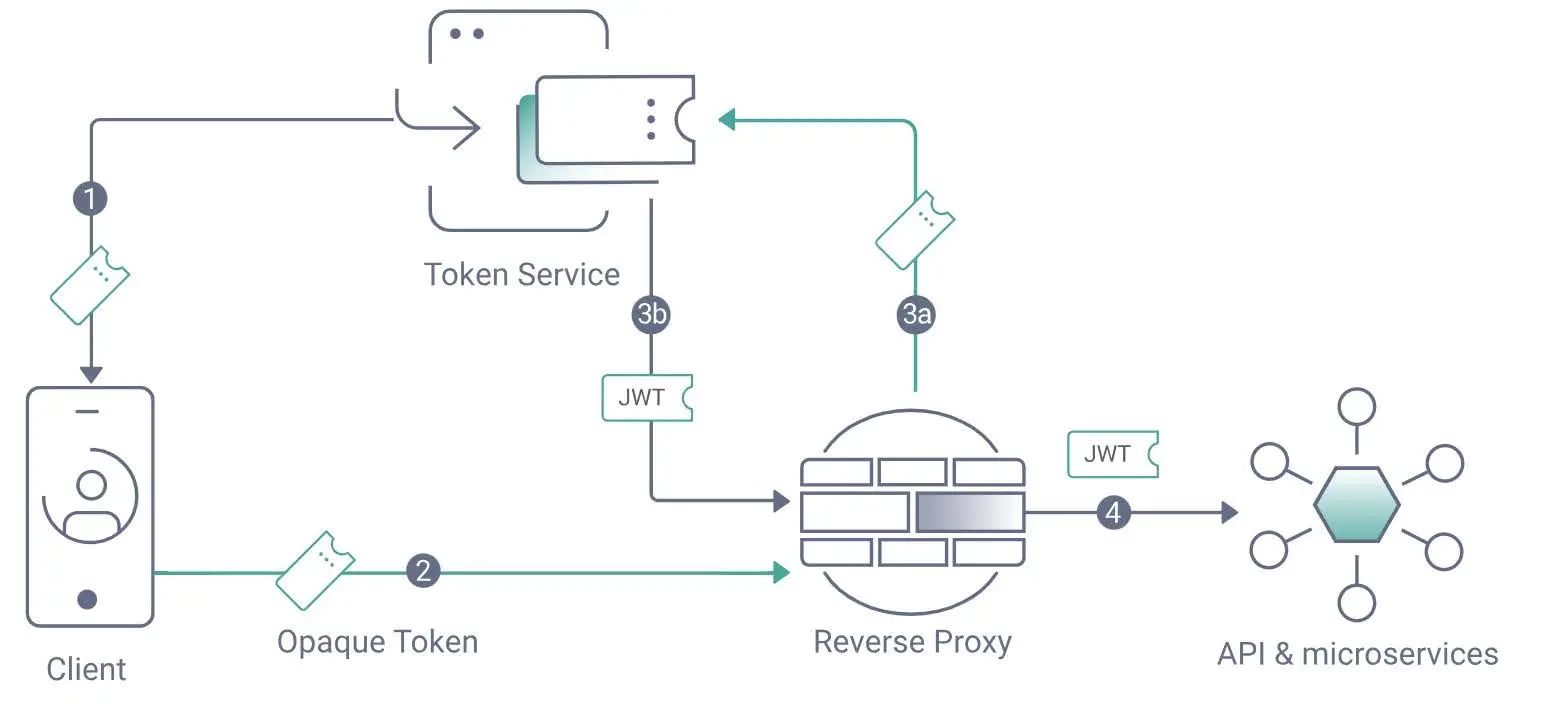
Quantum-safe API Security
How to Prepare APIs for the Post-quantum Future
Quantum computing changes the security assumptions for APIs. With the help of specialized algorithms, quantum computers can speed up calculations and potentially break common cryptographic algorithms. To keep data safe, things need to change. This article discusses controls that you should take to boost an API security architecture and prepare for quantum computing.
Fortunately, several practical steps - including robust token design and proxy configuration - already allow teams to build quantum-resilient APIs today, even before new cryptographic standards are fully deployed.
What is Quantum Computing?
Quantum computing takes advantage of physical properties such as superposition and entanglement. Superposition allows tiny particles to be in multiple energy states at once, while entanglement links particles so their states remain synchronized, even across distance.
While conventional computers operate on “bits” to store information that can either be on (1) or off (0), quantum computers use quantum bits, “qubits”, that can be in multiple states. That is, qubits can be zero, one and anything in between at the same time. Furthermore, the states of qubits can be entangled giving a quantum computer exceptionally much more computing power. As a result, the main benefits of quantum computing are parallelism and processing speed.
Quantum computers are not good at everything; they perform very well for special computations. It turns out that quantum computers are good at breaking crypto, which impacts the techniques used to protect APIs and business data.
What is the Impact of Quantum Computing on API Security?
API security relies heavily on cryptographic algorithms to deliver key security properties such as confidentiality, integrity, authenticity and non-repudiation. These typically rely on mathematical problems that are difficult for traditional computers to solve.
Quantum computers change the current state of the art significantly. They can eventually solve common cryptographic problems in a fraction of time compared to conventional computing (e.g., hours instead of years). Such computers are called Cryptographically Relevant Quantum Computers (CRQC). They basically deprecate many common cryptographic algorithms.
In practical terms, there is a risk that transport encryption such as HTTPS can be decrypted and requests manipulated on the fly, or that unauthorized parties can create valid signatures to undermine any integrity and authenticity. In other words, the availability of CRQC potentially breaks common API security controls and neutralizes any trust in digital communications.
There are still challenges with quantum computing that prevent a big rollout of CRQCs. Quantum computers are error-prone, for example, and can only process a limited amount of data. So far, researchers have only managed to crack RSA with very small keys (such as 80-bit) using quantum computers. However, attackers may already harvest encrypted data for later decryption with CRQC (an attack called “harvest now, decrypt later”), putting data from the past (archived documents), present and future at risk.
Researchers estimate that a quantum computer with less than a million noisy qubits could factor a 2048-bit RSA integer in less than a week. In line with that risk, NIST recommends in its initial public draft deprecating ECDSA, EdDSA and RSA in 2030 and stopping using them after 2035. Similarly, the European Commission recommends member states to transfer to post-quantum cryptography as soon as possible.
What is Post-Quantum Cryptography?
Post-quantum cryptography (PQC) encompasses algorithms whose security properties hold despite the processing power of quantum computers of tomorrow. It means that not even cryptographically relevant quantum computers will be able to break such algorithms, decipher encrypted communication or calculate private keys from public keys. Other names for post-quantum cryptography are quantum-proof, quantum-resilient or quantum-safe cryptography (QSC).
Standardization and guidance is very important when it comes to the selection of cryptographic algorithms. The following list includes algorithms that either the National Institute of Standards and Technology (NIST) or the German Federal Office for Information Security (BSI) calls out to be quantum-safe.
Key Agreement: FrodoKem, ML-KEM
Symmetric Encryption: AES
Hash Functions: SHA2, SHA3
Message Authentication Code: HMAC, CMAC
Signature Schemes: ML-DSA, SLH-DSA
The above list includes new and traditional algorithms because cryptographically relevant quantum computers have a higher impact on asymmetric algorithms than on symmetric ones. If you are already using SHA2, and AES such as AES-GCM, for example, then you may not have to change (much) in certain areas of your API security architecture.
How Does Quantum Computing Affect the Curity Identity Server?
The Curity Identity Server uses cryptography across several key areas. Here’s how it’s affected.
Area | Algorithms (available) | Quantum-Safe | Comment |
Configuration | AES | yes | |
Hashing functions | SHA2 (SHA-256, SHA-512)
| yes | |
TLS 1.3 (Handshake) | ECDSA, EdDSA, RSA | Not yet | Can be solved via a reverse proxy that supports TLS 1.3 with quantum-safe algorithms. |
TLS 1.3 (Encryption) | AES-GCM | yes | |
Access Tokens | N/A | yes | External clients receive access and refresh tokens with an unguessable and quantum-safe opaque access token format. |
Token Signatures | RSA, ECDSA, EdDSA | Not yet | Mostly used in the internal network, where APIs receive JWT access tokens. Future product versions will support quantum-safe signature algorithms. |
Symmetric Signatures | HMAC-SHA | yes | |
Symmetric encryption | AES | yes |
The above table lists two current vulnerabilities: TLS and token signatures. TLS is typically out of hand of the Curity Identity Server as the TLS communication terminates at an API gateway.
a proxy. It means that you don’t have to rely on Curity to solve the problem but can address it independently via the proxy. This leaves token signatures as the only open issue. With the correct architecture, you don’t even have to bother with that.
Phantom Tokens: A Practical, Quantum-Safe Token Strategy
Curity has been advocating the phantom token approach as a best practice for years. Typically we explain the privacy and architecture benefits. But it turns out that phantom tokens are also the most effective and immediately implementable strategy for quantum-safe access tokens.

The phantom token approach is simple to understand:
The authorization server issues opaque, random tokens (not JWTs).
Clients receive and use these non-parsable tokens.
At runtime, the API gateway introspects the token and exchanges it for a signed JWT inside the trusted network.
Opaque access tokens are quantum-safe tokens. They are random strings that the authorization server associates with some data. The only way to determine whether an opaque access token is valid, is via the authorization server using a protocol called introspection. A cryptographically relevant quantum computer cannot craft a valid, opaque token to pass validity checks.
With opaque tokens, a quantum computer must guess the correct value. It may, at best, be quicker to generate new random values than conventional computers, but it still needs to try each guess to check whether it found a valid token that gives access. This is no different from the current threat of brute forcing.
You should address the threat of brute force independently from the quantum computing risks. What is more, since brute force is not a new risk, you most likely already have controls in place. For example, you may already use mechanisms such as rate limiting and cooldowns to restrict requests with invalid access tokens.
By simply changing to opaque access tokens and applying the phantom token approach, you can reduce the API risks of quantum computing to those of brute force attacks. There is no need to support new, complex algorithms for access tokens that you return to external clients. Once quantum-safe algorithms are available, you can also update the internal network to use them without changing your deployment architecture. The phantom token approach is therefore future-proof.
Conclusion
Cryptographically relevant quantum computers (CRQC) appear scary because of their impact on the current ecosystem. Some solutions require a switch to post-quantum algorithms. For example, to mitigate the risk of harvest-now-decrypt-later threats, change to TLS 1.3 with quantum-safe algorithms in your reverse proxy or API gateway. Some proxy vendors already support quantum-safe TLS.
When it comes to access tokens, you can use the phantom token approach to achieve a post-quantum solution without quantum-safe algorithms. Sometimes, the simplest solutions are the best and most robust. The phantom token approach is one of them. The Curity Identity Server supports the phantom token pattern out of the box - letting you build secure, scalable, and quantum-resilient API architectures today.




